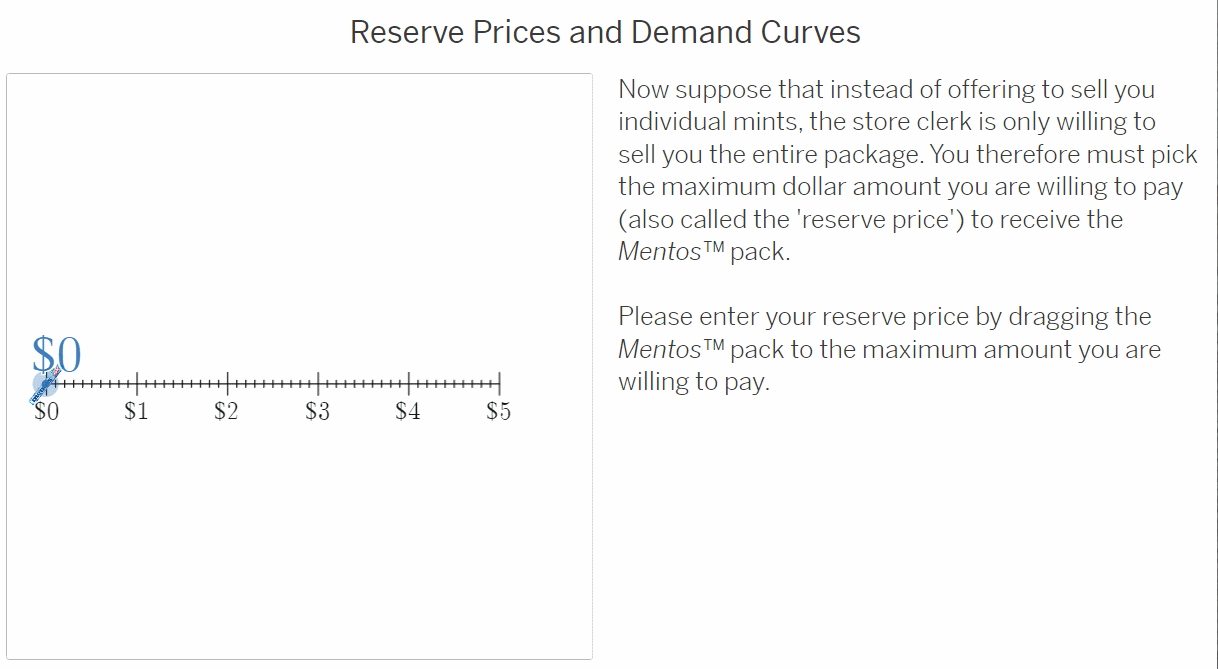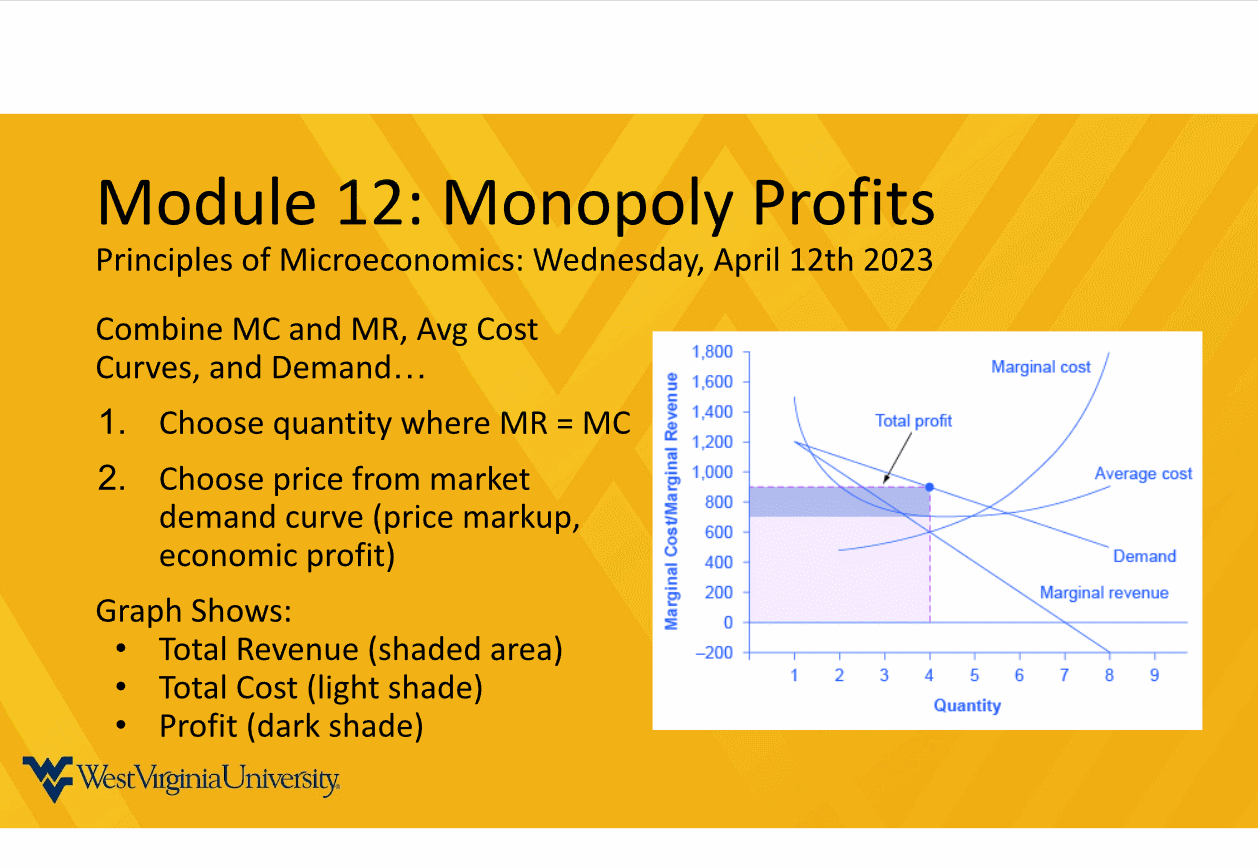Teaching Resources
Below I will outline a couple common resources I’ve adopted and had success with in improving my teaching practices. In general, these tools are all free, though some may have paid premium versions. Feel free to copy, replicate, or modify any of these materials.
Desmos
This free web-based platform has been used by math educators extensively for a decade, but has been largely unutilized within the economics classroom. Like other proprietary systems such as Moblab, this technology permits me to integrate experiments directly into the lecture material, but is completely open-source and adaptable. For instance, one in-class, real-time activity I composed to demonstrate the role of price discrimination under monopoly involved having students observe first-hand how student discounts can affect firm revenues. The scenario was personalized to my students and involved separating between potential museum-goers and price-setting museum management; but I have shared the underlying code for this experiment with my fellow instructors, who have in turn adapted the program to fit their students' needs.
Rather than describe each of these Desmos tools here, I’ve compiled them into a Google Doc here, which includes complete instructions, activity guides, learning outcomes, and follow-up questions. You’ll also find several other non-experimental Desmos tools as well, such as graphing tools and interactive plots meant to elucidate various curve shifting exercises.

Peardeck
Peardeck is an add-on feature to Google Slides (or Powerpoint) that permits lecturers the ability to ask questions and collect feedback in real time. This is similar to other paid services like TopHat, but has the added convenience of being managed entirely from the normal Google Slides workspace. While complete functionality is only available with a paid premium subscription, there is also a free version which includes most of the core features, including: asking text, numerical answer, and multiple choice questions, and the ability to embed interactive websites within lecture slides.
I’ve found Peardeck to be particularly helpful when working with larger Principles sections in keeping students engaged and participating. For grading purposes, Peardeck allows instructors to collect/display student input in real time, or analyze it after-the-fact within a spreadsheet. Oftentimes, instead of simply taking attendance, I will start lectures with ice-breaker questions on whatever that day’s subject is, then use these responses to record participation.

Peardeck-enabled lectures can also be shared with students in either instructor- or student-paced formats, where the latter allows students to navigate through the lecture and answer questions at their convenience. This is really helpful for exam preparation and study material: I will usually take all of the in-class questions from the preceding lectures, modify them slightly, then release them back to students in one combined Peardeck to review. To illustrate this functionality, see the linked student-paced Peardeck on how to use the FRED data graphing system here (note: you must have a free Peardeck account to view this). I’ve been using some variation of this guide for the past few years when teaching or TAing Prinicples of Macroeconomics, but it could be just as useful for Intermediate Macro, Money and Banking, or Public Finance. If you would like to see what these FRED slides look like from the instructor’s perspective, feel free to make a copy of the Google Slides doc from here. For more information on using Peardeck, check out their how-to here.